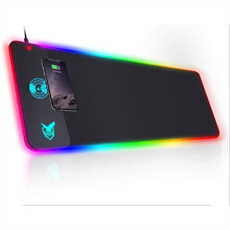While the computer mouse has served us well for decades as the primary means of interacting with digital interfaces, the future of mouse technology promises even more exciting innovations that go beyond traditional clicks and scrolls.
Gesture recognition technology is already making its way into mouse design. Soon, you may be able to perform actions like zooming, rotating, or navigating through applications with intuitive hand movements in the air, eliminating the need for physical buttons.
Haptic feedback is another area ripe for development. Enhanced haptic feedback can provide a more immersive experience, allowing users to “feel” textures, surfaces, and even virtual objects through their mouse. This technology has the potential to revolutionize gaming and virtual reality applications.
Wireless charging technology is becoming more prevalent, and future mice may incorporate this feature. Imagine a mouse that charges itself while in use on a compatible surface, eliminating the need for frequent recharging or battery replacements.
Artificial intelligence and machine learning are also poised to play a significant role in mouse technology. Mice equipped with AI can adapt to user preferences, optimize tracking on different surfaces, and even predict user actions for a more seamless experience.
In conclusion, the future of mouse technology is brimming with possibilities. As we continue to push the boundaries of what mice can do, we can look forward to a more intuitive, immersive, and efficient way of interacting with our digital world. The mouse, it seems, is far from reaching its evolutionary peak.






